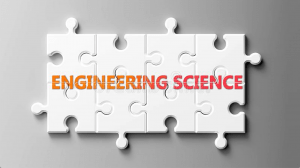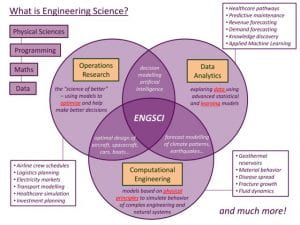It’s like a puzzle!
I’m assuming the majority of you have absolutely no idea what specialisation you want to go into; the coding projects was satisfying so should I do software, the dynamics experiment was fun so should I do mechanical, the truss project was interesting so should I do Civil? What do I do with my life?! Don’t worry because many others and myself were in your position last year!
I always get asked two questions:
- Why did I choose Engineering Science?
- What is Engineering Science?
For those that know me, I am a very indecisive person (I know I’m improving on it!) so I had a very hard time choosing between the specialisations. In fact, at the start of first last year I had the intent of going into software and at the end of first semester I had the intent of going into civil so it’s somewhat of a coincidence of how I’m here! Throughout my first year, I pictured myself down every specialisation but couldn’t see myself taking a long term career in any of them. Structural? Nah, don’t really want to write a report about concrete… Biomedical? Nah, not many job opportunities other than F&P… Compsys? Well I might as well do software… Electrical? Never in my lifetime…
I had a bunch of puzzle pieces but I had no idea how to put them together. So I did what any ordinary person would do and ask for help! Here’s what I did:
- I had many conversations with Part II engineers from different specs
- I read and gained insight from a lot of part II blogs
- I went to the WEN Part 1 Specialisation Evening (very helpful!)
- I researched different engineering careers.
- I ranked all the first year engineering papers
- I wrote down what I was good at and what I actually enjoyed doing
- I researched what engineering specialisation makes the most amount of money
Through all this, I had an epiphany that Engineering Science was for me! 😀

Now, I’m going to go into a bit more in-depth on what Engineering Science is really about (it’s gonna get intense…). I hope I don’t confuse you but the general takeaway is Engineering Science is a combination of Operations Research, Data Analytics, and Computational Engineering. I have included a handy Venn diagram illustrating all these key aspects.
It is the most broad and versatile specialisation with its many elective papers (which I’ll go into more in another blog). It was a perfect match for me with its mix of problem solving, mathematical models and optimisation of real world processes. Let’s break it down shall we?
Operations Research:
Operations Research (OR) is known as the “science of better”. OR focuses on using scientific approaches to build mathematical models to optimise and help make better decisions in industry and business. Decisions such as ways of making things cheaper, quicker and safer. OR isn’t for the faint hearted. In OR, you learn to apply optimisation algorithms to mathematical models of complex problems to find the best solutions and decisions when going forward. If you enjoy solving problem solving, mathematical puzzles, and finding optimal solutions to difficult practical problems, then OR might be for you!!
Examples of OR include:
- What is the optimal route for trucks to deliver pallets of food to supermarkets all over Auckland? (you’ll find the answer in the next blog!)
- What is the optimal price Air New Zealand should sell tickets for to maximise profit from a flight from Dunedin to Auckland?
- What is the least amount of hours you need to study to get an A+ in ENGSCI111?
Data Analytics:
Data analytics (DA) is the process of examining data sets, applying statistical analysis, and visualising data to find trends and solve problems. In Engineering Science, we use programming languages such as R and Python to draw conclusions about the information data contains. DA use computer programming, mathematics, and statistics to perform analysis on data to improve decision-making, performance, and also forecasting. If you enjoy coding, statistics, and analysing data then DA might be for you!!
Examples of DA include:
- Modelling the inflow of water from each lake in New Zealand
- Summarising data in a visual illustration
- Modelling an optimal production process for a large manufacture
Computational Engineering:
Computational engineering (CE) uses models based on physical principles to simulate behaviour of complex engineering and natural systems. CE investigates what happens when forces are applied to all kinds of materials. CE draws upon aspects of solid materials such as plastic, glass, and steel and how they behave under certain conditions such as under strong winds or an earthquake. CE further draws upon aspects of fluids and gases such as geothermal reservoirs and managing natural systems when nitrate concentration pollutes groundwater aquifers and . If you enjoy learning about geothermal, solving mathematical equations, and calculus then CE might be for you!
Examples of CM include:
- How can we model blood flow in a human body?
- What happens to the muscles of an athlete when they get injured?
- How much damage is inflicted on a car when it crashes?
Conjoint:

Another reason why I chose Engineering Science was its ability to complement my commerce conjoint. I strongly recommend you consider choosing Engineering Science if you are a conjoint student. There are many elective papers which you can substitute in for your commerce papers so you’re technically taking less papers and paying less money to the uni, yay! For those that are wondering, I am majoring in finance and operations and supply chain management. Hopefully it will give me greater understanding of how business processes integrate within and between organisations.
On that note, I hope I influenced you to choose Engineering Science and I’ll see y’all in the next blog which will hopefully be out before the exam period! Stay safe fam, keep to your bubbles and we’ll get through this together. He waka eke noa!
